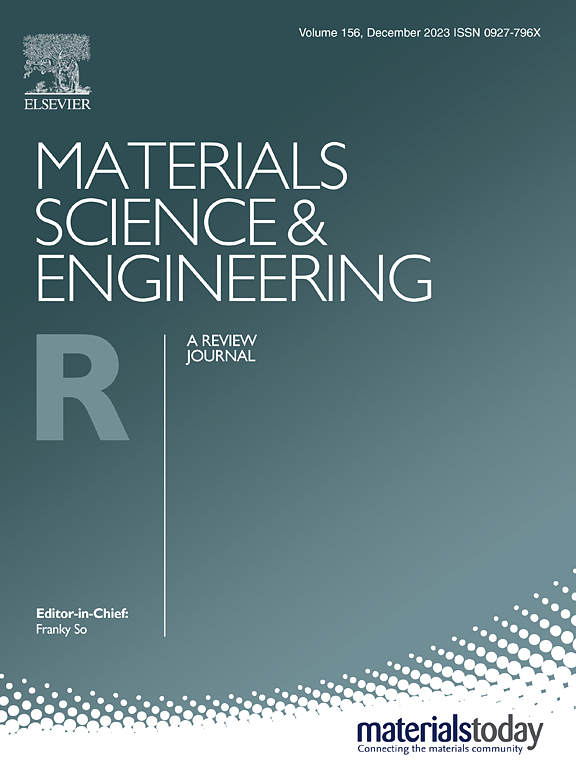An ultrasensitive flexible force sensor with nature-inspired minimalistic architecture to achieve a detection resolution and threshold of 1 mN for underwater applications
IF 31.6
1区 材料科学
Q1 MATERIALS SCIENCE, MULTIDISCIPLINARY
引用次数: 0
Abstract
Highly sensitive flexible force sensors enable precise detection of underwater signals for monitoring biological activity, environmental conditions, and vehicle movement. Multilayer stack assembly and micro/nano structure array are often seen in most force/pressure sensors which are toughly hard to control the interlayer spacing and micro/nano structures alignment precisely, resulting in poor consistency and stability. Herein, we first reported a new force sensor with a nature-inspired minimalistic architecture, addressing such issues in an elegant and surprising approach by using a single-layer arched functional membrane with one microgroove. Inspired by the scorpions’ slit sensilla and mantis’ campaniform sensilla, a highly sensitive and waterproof flexible force sensor was fabricated. It is demonstrated that the force sensor has a sensitivity of 27.6 N−1, a high force resolution (1 mN), a fast response time of 70 ms, excellent stability over 5000 cycles and linearity (0.996), and a small force detection limit (≤ 1 mN), showing great potential in underwater environment sensing and motion monitoring of vehicles. This novel but minimalistic architecture provides a new direction in the development of sensors with advanced performance.
超灵敏柔性力传感器,采用受自然启发的简约结构,检测分辨率和阈值达到 1 mN,适用于水下应用
高灵敏度柔性力传感器可精确探测水下信号,用于监测生物活动、环境条件和车辆运动。大多数力/压力传感器通常采用多层堆叠组装和微/纳米结构阵列,很难精确控制层间间距和微/纳米结构排列,导致一致性和稳定性较差。在本文中,我们首次报道了一种新型力传感器,它采用了受自然启发的极简结构,通过使用带有一个微槽的单层弧形功能膜,以一种优雅而令人惊讶的方法解决了这些问题。受蝎子的狭缝感觉器和螳螂的钟状感觉器的启发,一种高灵敏度、防水的柔性力传感器被制造出来。结果表明,该力传感器的灵敏度为 27.6 N-1,力分辨率高(1 mN),响应时间快(70 ms),5000 次循环以上的稳定性和线性度(0.996)极佳,力检测极限小(≤ 1 mN),在水下环境传感和车辆运动监测方面显示出巨大潜力。这种新颖而简约的结构为开发具有先进性能的传感器提供了新的方向。
本文章由计算机程序翻译,如有差异,请以英文原文为准。
求助全文
约1分钟内获得全文
求助全文
来源期刊

Materials Science and Engineering: R: Reports
工程技术-材料科学:综合
CiteScore
60.50
自引率
0.30%
发文量
19
审稿时长
34 days
期刊介绍:
Materials Science & Engineering R: Reports is a journal that covers a wide range of topics in the field of materials science and engineering. It publishes both experimental and theoretical research papers, providing background information and critical assessments on various topics. The journal aims to publish high-quality and novel research papers and reviews.
The subject areas covered by the journal include Materials Science (General), Electronic Materials, Optical Materials, and Magnetic Materials. In addition to regular issues, the journal also publishes special issues on key themes in the field of materials science, including Energy Materials, Materials for Health, Materials Discovery, Innovation for High Value Manufacturing, and Sustainable Materials development.
 求助内容:
求助内容: 应助结果提醒方式:
应助结果提醒方式:


